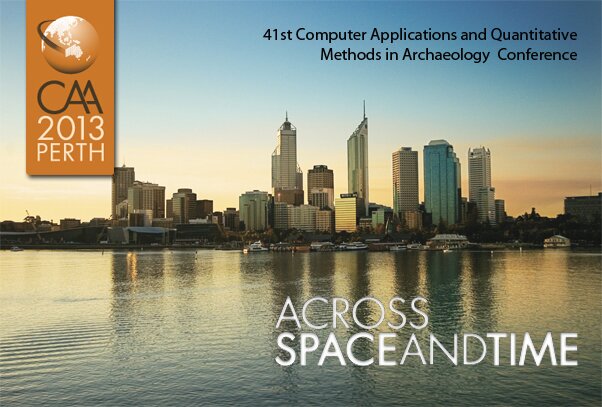 The Computer Applications and Quantitative Methods in Archaeology (CAA) Annual Conference is a major event in the calendar for scholars, specialists and experts in the field of informatic applications to archaeological scholarship.
The Computer Applications and Quantitative Methods in Archaeology (CAA) Annual Conference is a major event in the calendar for scholars, specialists and experts in the field of informatic applications to archaeological scholarship.
The 41st Computer Applications and Quantitative Methods in Archaeology ACROSS SPACE AND TIME Conference (CAA 2013 Perth) will explore a multitude of topics to showcase ground-breaking technologies and best practice from various archaeological and informatics disciplines, with a variety of case studies from all over the world.
The conference will be held at the University Club of Western Australia, Perth (Western Australia), from 25th to 28th March 2013. For further information, please visit the conference homepage: http://www.caa2013.org/drupal/home
Several collaborators of the Radio-Past Project will participate and present papers on the Project’s research methodologies and results:
Eleftheria Paliou is chair of the S12 session entitled Three-dimensional computational analysis and simulation in archaeological research (together with Costas Papadopoulus). She also will present a paper together with the Project’s coordinator Cristina Corsi in session S15 (Databases on cultural heritage and their geographic visualization). Their presentation (nr. 433) will focus on Old problems and new challenges in archaeological sites data management. The REVEAL experience at Ammaia (Portugal). The paper aims to present the experience with REVEAL at the Project’s main open lab in Ammaia, discuss its potential, and review the possible use of features not yet accessed.
Cristina Corsi and Eleftheria Paliou are again presenting a paper at the S14 session (Beyond virtual reality: documentation, interpretation and understanding of ancient cities). The paper (nr. 616), called Urban network analysis of integrated geophysical data: analysing the Roman street network of Ammaia (Marvão, Portugal), aims to explore the potential of urban network analysis to enhance the interpretation of ancient street networks, specifically at sites that have been investigated via extensive integrated geophysical surveys, using the Roman town of Ammaia as a case study.
In the same session, Frank Vermeulen will present a paper called Probing the limits of VR reconstructions and spatial analysis based on full coverage urban survey of Roman towns (nr. 436). He will focus on ‘totally’ surveyed towns that have been the subject of VR reconstructions and modeling attempts, critically evaluate the whole chain of operations, from fieldwork via data processing and interpretation to the creation of acceptable 3D computer-models for understanding Ancient Cities, and investigate the potential for spatial perception and analysis of the new maps and reconstructed architectures.
Both Cristina Corsi and Frank Vermeulen will be presenting a paper in session S25 (Geophysical prospection and remote sensing for archaeology. State-of-the-art and the road ahead). Under the title Radiography of the Past: methodological considerations and suggestions for good practice in archaeological diagnostics of complex sites (nr. 401), they will present the experience of the project ‘Radio-Past’ in the development of integrated non-destructive approaches for understanding complex archeological sites. The methodological framework, elaborated by researchers coming from very different fields, has focused not only on producing a ‘radiography’ of what still buried underground but also on data integration, interpretation, visualization and valorization of these peculiar archaeological records.


